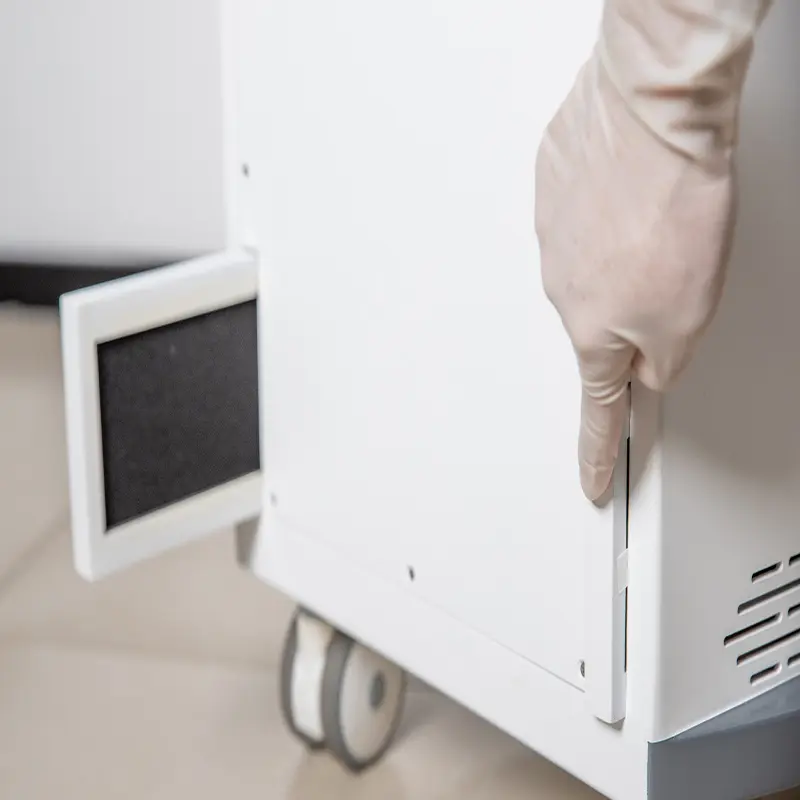Disinfection of the Internal Circulation of the Ventilator: Ensuring Safety and Hygiene in Critical Care
All we do is usually affiliated with our tenet " Buyer to start with, Belief to start with, devoting about the food packaging and environmental defense for Disinfection of the internal circulation of the ventilator.
Introduction: Ensuring Safety and Hygiene in Critical Care
We warmly welcome customers, business associations and friends from all over the world to contact us and seek cooperation for mutual benefits.
In critical care settings, the proper functioning of ventilators is crucial for patients who require assistance with their breathing. However, it is equally important to maintain a hygienic environment to prevent the spread of infections. Regular disinfection of the internal circulation of the ventilator is a key component in achieving this goal.
The Importance of Disinfection
Ventilators are exposed to a variety of potentially harmful pathogens, including bacteria, viruses, and fungi. These microorganisms can accumulate within the internal components of the ventilator, posing a threat to patient safety. Regular disinfection helps eliminate these pathogens, reducing the risk of healthcare-associated infections.
Methods of Disinfection
There are several methods available for disinfecting the internal circulation of ventilators. One commonly used technique is chemical disinfection. This involves the use of disinfectants specifically designed for medical equipment, such as hydrogen peroxide or quaternary ammonium compounds. These disinfectants effectively kill a wide range of microorganisms and are generally safe for use on ventilators.
Another method is heat disinfection, in which certain components of the ventilator are exposed to high temperatures for a specific period of time. This heat effectively destroys microorganisms, ensuring a safe and hygienic environment. It is important to follow manufacturer guidelines when using heat disinfection to avoid damaging the ventilator.
Additionally, ultraviolet (UV) light disinfection is gaining popularity as an effective method for disinfecting ventilators. UV light has the ability to penetrate and kill microorganisms, making it an ideal choice for disinfection. However, it is important to note that UV light may not reach all surfaces within the ventilator, so it should be used in conjunction with other disinfection methods.
Best Practices for Disinfection
To ensure the effectiveness of disinfection, it is essential to follow best practices. These include:
1. Regular cleaning: Clean the external surfaces of the ventilator daily using appropriate cleaning agents.
2. Proper handling: Wear personal protective equipment, such as gloves and masks, when handling and disinfecting the ventilator.
3. Thorough disinfection: Pay special attention to high-touch areas, such as control buttons and connectors, ensuring they are adequately disinfected.
4. Adherence to manufacturer guidelines: Follow the manufacturer's instructions for disinfection, as specific requirements may vary depending on the model and make of the ventilator.
5. Routine maintenance: Regularly inspect the ventilator for any signs of wear or damage to ensure its proper functioning.
Conclusion
Disinfection of the internal circulation of ventilators is crucial for maintaining a safe and hygienic environment in critical care settings. By adopting appropriate disinfection methods and following best practices, healthcare professionals can help reduce the risk of healthcare-associated infections and ensure the safety of their patients. Regular disinfection not only enhances patient care but also contributes to the overall efficiency of critical care units.
If you are interested in any of our products or would like to discuss a custom order, please feel free to contact us. We are looking forward to forming successful business relationships with new clients around the world in the near future.
